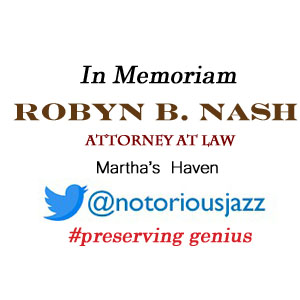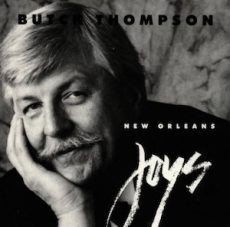
Daily Dose Of Jazz…
Richard Enos “Butch” Thompson was born on November 28, 1943 in St. Croix, Minnesota, began playing piano at the early age of three, and began taking lessons at age six. At Stillwater Area High School, he played clarinet in the band and in 1962 he joined the Hall Brothers New Orleans Jazz Band in Minneapolis, Minnesota and remained with them for twenty years.
>From 1974 to 1986, he was a regular and the original pianist on the radio show A Prairie Home Companion. From its inception in the 1960s he led the Butch Thompson Trio.
The 1970s saw Thompson’s recordings gaining popularity in Europe and he toured the continent extensively during the decade and into the 1980s, both as a solo artist and as a band leader or member.
He wrote for jazz publications and produced a radio show, Jazz Originals, for KBEM-FM in Minneapolis. Pianist and clarinetist Butch Thompson, best known for his ragtime and stride performances, died on August 14, 2022.
More Posts: bandleader,clarinet,history,instrumental,jazz,music,piano
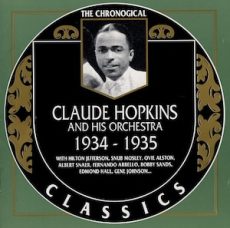
Daily Dose Of Jazz…
Pete Edward Jacobs was born on May 7, 1899 in Asbury Park, New Jersey. His first professional job was playing with the Musical Aces. He then joined the band of Claude Hopkins from 1926 to 1928.
Leaving Hopkins he joined Charlie Skeete for a short stint but returned to play with Hopkins from 1928 until 1938. During this ten-year tenure in Hopkins’s orchestra, Jacobs recorded extensively with the group on Brunswick Records, during 1932 to 1937.
Additionally, he appeared with the band in the short films Barbershop Blues in 1933) and By Request in 1936.
Falling ill in 1938 he hung up his drummsticks and quit the group, never returning to active performance. Drummer Pete Jacobs, who was prominent during the swing era for about a decade, died in 1952, month and day unknown.
More Posts: drums,history,instrumental,jazz,music
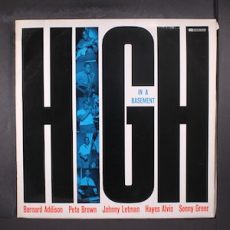
Daily Dose Of Jazz…
Bernard Sylvester Addison was born on April 15, 1905 in Annapolis, Maryland. At an early age, he learned mandolin and violin, and after moving to Washington, D.C. in 1920 he played banjo, initially with Claude Hopkins.
Moving to New York City he worked with Sonny Thompson and recorded for the first time in 1924. During the 1920s, he dropped the banjo for the acoustic guitar. The 1920s and 1930s saw Bernard playing with Louis Armstrong, Adelaide Hall, Fletcher Henderson, Bubber Miley, Art Tatum, and Fats Waller. Addison recorded with Red Allen, Coleman Hawkins, Horace Henderson, Freddie Jenkins, Sara Martin, Jelly Roll Morton, and Mamie Smith.
In 1936, John Mills of the Mills Brothers died, and Addison replaced him on guitar. For two years he toured and recorded with the Mills Brothers, increasing his popularity. After departing the Mills Brothers, he had little trouble finding work. He went on to record with Benny Carter and Mezz Mezzrow.
He played with Stuff Smith and recorded with Billie Holiday. In 1940, he recorded with Louis Armstrong and Sidney Bechet. He began to lead bands until he was drafted during World War II. In the late 1950s, he reunited with Henderson and played guitar for the Ink Spots. He performed at the Newport Jazz Festival with Eubie Blake in 1960 and recorded a solo album as a leader, Pete’s Last Date, and unfortunately was reissued under the name of saxophonist Pete Brown.
Guitarist Bernard Addison, who spent the remaining thirty years of his career teaching, died on December 18, 1990 at 85 in Rockville Centre, New York.
More Posts: guitar,history,instrumental,jazz,music

Daily Dose Of Jazz…
John “Bugs” Hamilton was born on March 8, 1911 in St. Louis, Missouri.
Leaving home for New York City in 1930 he was a member of trombonist Billy Kato band and played with Chick Webb around the same time for about a year.. Toward the middle of the decade he played with Kaiser Marshall, then joined Fats Waller’s ensemble in 1938. Bugs remained with Waller until 1942, touring, recording and often appearing in several films as a member of Waller’s group.
During World War II he played with Eddie South and Roy Eldridge. Shortly after the end of the war, trumpeter John Hamilton contracted tuberculosis, resulting in his death at age 36 on August 15, 1947 in St. Louis.
More Posts: history,instrumental,jazz,music,trumpet
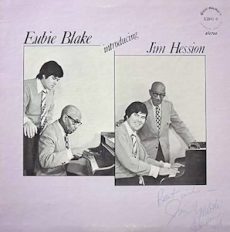
Daily Dose Of Jazz…
Jim Hession was born on December 10, 1947 in Pasadena, California, where he studied piano with composer Oscar Rasbach. By the time he turned twenty he was a fixture in the traditional jazz scene, with his incredibly accurate two-handed piano style. He was a founding member of the Maple Leaf Club, receiving his degree in composition from the University of California at Los Angeles (UCLA), where he studied under Paul Chihara and Lalo Schifrin.
Jim met and began recording with Eubie Blake and while recording with Eubie Blake in New York City he began exploring more contemporary jazz venues, while retaining his handle on traditional jazz styles like ragtime, stride and boogie-woogie.
He met his future wife Martha while they were attending UCLA, where she was studying piano and voice. She began singing professionally with Jim and started a professional association with the Walt Disney Company in 1967 until relocating to the Gulf Coast in 2003.
Over the years they have performed with such luminaries as Teddy Wilson, Al Hirt, Bob Crosby, Johnny Guarnieri, Max Morath, Shelton Brooks, Gregory Hines, Savion Glover, and Disney songwriters the Sherman Brothers. They have acquired an incredible knowledge of the history of American music and hold 85,000+ pieces, one of the largest privately-held collections of original sheet music in the United States.
They have lectured at many colleges and educational venues across the country. The couple have performed as a jazz duo, headlined the American Jazz Quintet, appeared on television, produced stage shows, and historical lectures. Pianist Jim Hession and Martha Hession continue to bring a level of talent and versatility not often found on the music scene.
More Posts: bandleader,history,instrumental,jazz,music,piano




